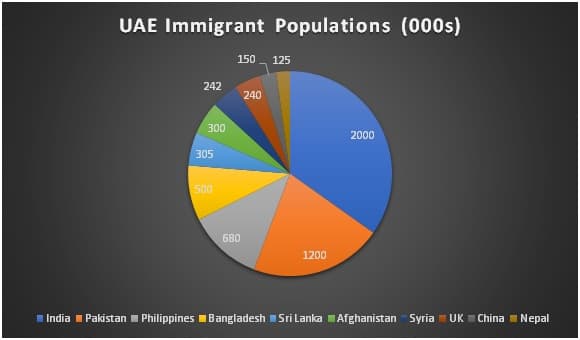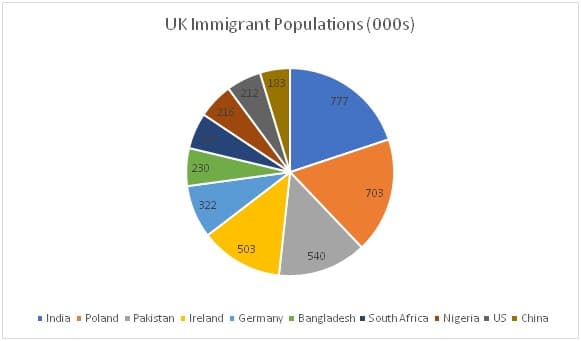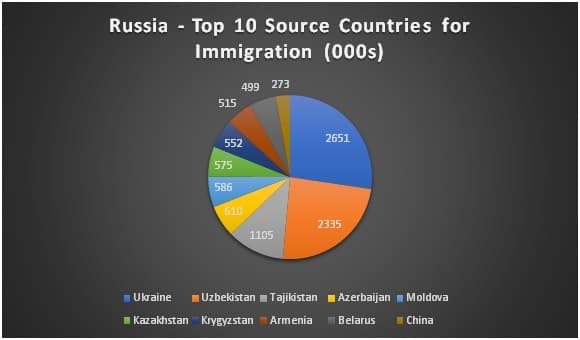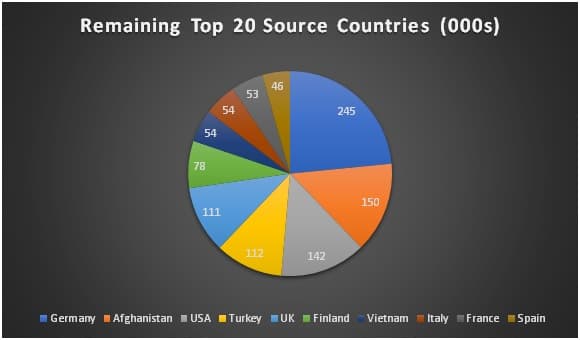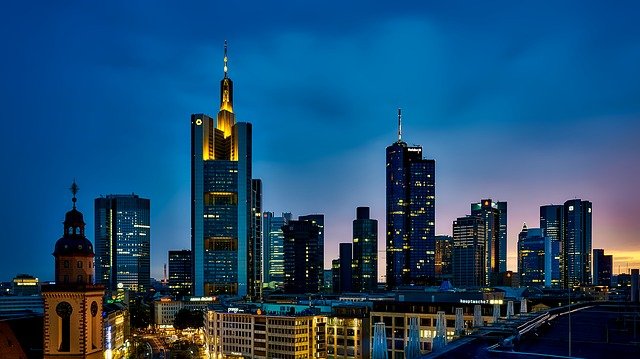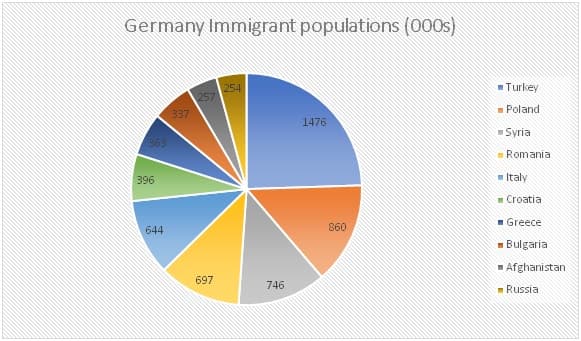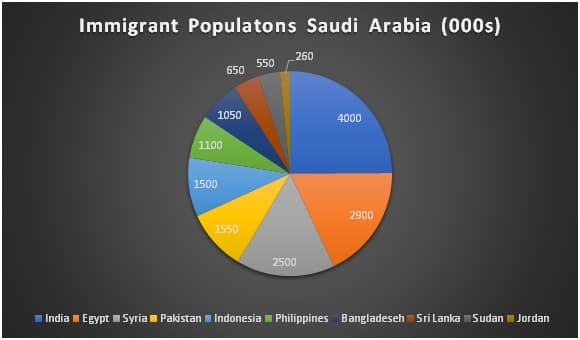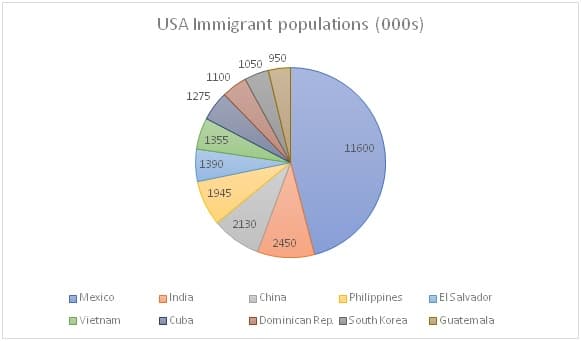Top 10 Immigration Friendly Countries

So you’re ready to leave your country and start a new life somewhere, but you’re not sure which destination is right for you. We picked the top ten most welcoming countries for immigrants, from the places with booming economies to the spots with the most progressive immigration policies and immigrant support services. Don’t just throw a dart at a map or follow your relatives: consider what your priorities will be and pick the country that’s right for you.
Updated for 2019
This is an article about the 10 countries in the world most receptive of immigrants. Immigroup has been putting out this list for about 6 years now. Our data on immigration comes from the UN and various government agencies and NGOs. With that in mind…
It’s time to take a fresh look at our top 10 immigration friendly countries because if there’s one certainty about immigration, it’s that it is always changing. Immigration policies change. Economies cycle between boom and bust or at least growth periods and slow-downs or even severe recessions. And crises around the world mean the flow of refugees and economic migrants shifts according to the situations in their home countries and their preferred destination countries.
- India
- Spain and Italy
- Australia
- Canada and France
- United Arab Emirates
- United Kingdom
- Russia
- Germany
- Saudi Arabia
- United States of America
What’s happened since we last looked at the top immigration friendly countries? A lot, including elections, conflicts, trade wars, border disputes, refugee crises and more. That means shifting flows of people around the globe. So, in the midst of all this chaos and change, the main question remains: where do people move to in order to live and work? What sometimes changes are the answers to that question.
And the most direct answer is where immigrants actually choose to – and are able to – go. We can tell you what we think are those countries with the best social safety nets for immigrants. (Perhaps Sweden or Canada’s British Columbia province for example.) We can tell where all kinds of job opportunities abound (the USA of course along with Australia and Canada).
But let’s look at where immigrants actually went, according to the UN 2017 International Migration Report. These are countries with high flows of immigrants and often have well-established immigrant communities that can provide support to newer arrivals. They also are were jobs are available. They may not always be top-paying jobs, but they often pay more than what’s available in an immigrant’s home country.
10 (12). India
India is really 11th in terms of number of immigrants it attracts with a total of 5.2 million in 2017 according to the UN, but Spain and Italy tie for 9th spot (see below) so India holds on to its number 10 ranking. How can this be you might argue? India is a huge source of immigrants and NRI communities around the globe are proof of this. Yes. But.
Guess what percentage of India’s population immigrates to other countries? Only a little more than 1% of those born in India actually live abroad. That’s about the same rate as … the U.S. Surprised? You shouldn’t be. India is a giant with a population of 1.3 billion and a growing number of qualified professionals seeking opportunity elsewhere. With that large of a population, even just 1% is enough to make India arguably the world’s top source of immigrants.
So, most Indians actually stay and live and work at home. And they are joined by immigrants – the overwhelming majority who come from neighbouring countries:
Immigrant population of India by Country of Origin – 5,200,000 Immigrants
[Click for larger]| Country of Origin | Immigrants |
|---|---|
| Bangladesh | 3,200,000 |
| Pakistan | 1,100,000 |
| Nepal | 540,000 |
| Other | 300,000 |
Bangladesh is by far the principal source with 3.2 million immigrants to India followed by Pakistan with 1.1 million. Nepal comes third at 540,000 while other nationalities only make up around 300,000 immigrants to the South Asian giant. Some may be highly skilled professionals, but the much larger proportion of immigrants are likely workers with less skilled occupations seeking entry level work. Or desperate refugees.
Nevertheless, India has an economy that has taken its place alongside its fellow BRICS countries (Brazil, Russia, India, China, South Africa) and has growing tech and manufacturing industries. But the question is: are there opportunities for immigrants in those areas? One clue to what may be the answer is the fact that religious minorities are a far higher percentage of NRI communities than they are in India itself. Compare these two figures:
While this does not say that discrimination is rampant in India, it does suggest that most religious minorities see more opportunities abroad. India is large and diverse, but as a destination it is yet to become a truly attractive destination for higher skilled professionals on a large level. Clearly there are good jobs to be had in India. It’s just a question of who gets them. And also a question of whether India’s neighbouring countries can start solving their own problems of poverty and strife.
9 (10). Spain and Itlay
by Piccolo Modificatore Laborioso / Wikimedia Commons / CC BY-SA 3.0
Two countries who were once the seat of world-spanning empires.
Two countries with storied histories and a rich cultural legacy as well as beautiful, sophisticated urban centres.
Two countries where the lingua franca is not English.
Two countries who insist that their cuisine is better, despite what the French say.
Two countries with modern economies that have some world-class companies but whose enterprises are not quite at the level of those from a Germany or Japan.
Two countries that many people love to travel to.
And two countries that have increasing immigrant populations as a result of geography, history, and demography. Barca or Juve? Milan or Madrid? With Italy and Spain, there’s a lot to choose from.
Both Spain and Italy have immigrant populations of about 5.9 million, which is substantial for countries with a total population of 46.7 million for Spain and 60.55 million for Italy. That’s nearly 13% for Spain, and just under 10% for Italy. But the key is the falling birthrate in both countries so that Spain, despite strong immigration numbers, has a barely growing population while Italy’s population is actually falling slightly even with immigration. They have modern economies, but available jobs, especially professional ones, are even a problem for the native-born young in both countries, never mind immigrants. In 2019, the unemployment rate for people under 25 in Italy rose to 33% while in Spain it fell to 32.6%. One in three young Spaniards and Italians can’t find a job. And their populations would be collapsing without immigration.
But despite this, immigrants still find their way to both countries. Both countries are southern gateways to Europe, and many Latin Americans desperate to look for better conditions are more than happy to take lower-paid jobs in Spain rather than try to survive back home.
As well, for highly skilled professionals Spain is actually a better bet than Italy. After a disastrous near-decade of shrinking growth starting during the financial meltdown of 2008 and prolonged due to the collapse of a real estate bubble, Spain has now been growing nicely for the last 4 years especially compared to its cappuccino-sipping, gerontocratic (ruled by the aged) Mediterranean cousin to the East. That means that nowadays you’ll find both Italian and Portuguese professionals living and working in cities like Madrid.
But perhaps even more importantly, Spanish workers who emigrated during Spain’s long recession are returning. Net migration of Spaniards is evenly balanced for the first time in years.
[click for larger]
Immigrant population of Spain and Italy by Country of Origin – 5.9 million immigrants
| Country of Origin (Spain) | Immigrant Population of Spain | Country of Origin (Italy) | Immigrant Population |
|---|---|---|---|
| Romania | 798,000 | Romania | 1,190,000 |
| Morocco | 773,000 | Albania | 440,000 |
| Ecuador | 316,000 | Morocco | 416,000 |
| United Kingdom | 312,000 | China | 290,000 |
| Colombia | 250,000 | Ukraine | 234,000 |
| Bolivia | 183,000 | Philippines | 168,000 |
| Italy | 177,000 | India | 152,000 |
| China | 171,000 | Bangladesh | 132,000 |
| Germany | 153,000 | Moldova | 132,000 |
| Portugal | 121,000 | Egypt | 119,000 |
So what nationalities make up Spain’s immigration population? The official data most likely understates the number of foreign-born living in Spain but according to the 2011 census the top groups are:
[click here for larger]There are many other Latin American countries or former Spanish colonies represented in the top 20 countries in Spain as well. This is because Spain’s immigration system is far more flexible than Canada’s for example. Consider these two key rules/laws:
- Immigrants from countries that used to form part of the Spanish Empire (Latin America, the Philippines, Equatorial Guinea, and Western Sahara) can obtain Spanish citizenship after 2 years of residence.
- Children of immigrants whose parents are not eligible for transfer of citizenship (parents who do not come from former Spanish colonies in other words) who are born in Spain receive Spanish citizenship automatically. In other words, birthright citizenship is the law in Spain, unlike some other European countries.
- As well, in Spain there is a large grey or black market in the agricultural sector and in the construction industry where many lower-skilled immigrants can find work and get paid under the table.
Italy, on the other hand, has a slower-growing economy which offers less to professionals as well as less opportunities to the young, although youth unemployment is a problem in both countries, as stated above. As well, there seems to be more concern about immigrant populations in Italy, especially North African immigration which is mostly refugees or others arriving illegally by boat across the Mediterranean. So, while Italy is becoming a more diverse nation, it is not quite as accepting of immigrants perhaps as Spain. Here are the numbers:
[click for larger]In other words, if you have some capital and are looking for quality of life, then by all means Italy is a wonderful option. But as a place to establish yourself and advance your career, it is clear that Spain has the edge on their Roman cousins.
8 (9). Australia
by Michael J Fromholtz / Wikimedia Commons / CC BY-SA 4.0
Canada’s points-based immigration system is based in large part on Australia’s. Like Canada, Australia is an enormous country with a relatively sparse population concentrated on the coast. (Or close to the U.S. border in the case of Canada.) Like Canada, Australia has a huge hinterland that may be rich in minerals but which supports very low population figures, scattered across a large area. In Australia the Outback gets very hot (over 40 Celsius). In Canada the Arctic gets very cold. (Under 40 below 0 Celsius). And like Canada, Australia has one of the world’s largest percentage of immigrants as a share of their total population.
As in Canada, there is a growing mood to restrict immigration in Australia, but so far Australia remains a great destination for immigrants. Around 7 million residents of Australia come from abroad, and that’s with a total population not much more than 25 million.
As diverse as Australia is, one has to remember its history as a penal colony. If the New York Times 1619 project has unleashed another fierce battle in the cultural war in the USA, one could date Australia’s project from January 26, 1788 when the first ship carrying convicts from Great Britain arrived in Botany Bay in Sydney. The convict-settlers were mostly petty criminals caught in the UK’s cities and transported down under, sometimes ripped from the bosoms of their families in the case of child convicts. Penal transportation continued for 80 years until 1868, well into the latter half of the 19th century. These was uncomfortably close to the horrors of the slave trade, in this case applied to natives of the UK rather than those of other lands.
Like Canada, Australia enacted discriminatory immigration policies around the turn of the 20th century with its Immigration Restriction Act of 1901, otherwise known as the White Australia policy. This was done in the main to restrict immigration from Asia – especially China – which is a natural source of immigrants given Australia’s location in the Western South Pacific. So current resistance to immigration in Australia has some precursors that are nothing to be proud of.
Having said that, Australia – albeit with a rigorous points-based system that seeks maximum benefit for Australia’s economy as well as cohesion in diversity for its society – has since opened its arms to immigrants from around the world. So it’s no wonder that 7 million out of around 25 million Australians come from abroad. That’s even more than Canada’s case. There are essentially four principal types of visas handed out:
- Skilled Occupation Visas for skilled workers
- Student Visas for foreign students
- Family Visas for immigrants with family ties in Australia
- Investor Visas for foreign investors.
There are also two types of humanitarian visas:
- Refugee-category visas
- SHP visas for those subjected to substantial discrimination in their home country.
Australia rigorously applies its immigration rules and policies, so you have to play by the rules. It’s policy towards refugees without visas arriving – or trying to arrive – by boat has been criticized but they insist that the only way to come to the Land Down Under is legally. And that means with a visa.
Here’s a look at the top source countries for Australia’s immigrant population:
Immigrant population of Australia by Country of Origin – 7 million Immigrants
[click for larger]| Country of Origin | Immigrant Population | Country of Origin | Immigrant Population |
|---|---|---|---|
| England | 992,000 | Vietnam | 256,000 |
| China | 651,000 | South Africa | 189,000 |
| India | 592,000 | Italy | 187,000 |
| New Zealand | 568,000 | Malaysia | 174,000 |
| Philippines | 278,00 | Scotland | 135,000 |
The main difference with Canada is that UK countries – England and Scotland in particular – account for a somewhat larger proportion. But otherwise it’s a familiar mix of diversity for any Canadian. Again, Australia is a top destination for anyone seeking to live and work. Just remember. When it comes to Down Under: Do. It. By. The. Rules.
7. Canada and France 7.9 – million immigrants
by Aquintero82 / Wikimedia Commons / CC BY-SA 4.0
Remember, we’re basing our top 10 on where immigrants actually go. So with that in mind, we rank Canada and France equally because both countries have about 7.9 million residents that were born abroad. Both countries speak (some) French, but of course. Charles De Gaulle acted like a pompous overlord in both countries – on a balcony in Montreal in 1967, and for 10 years as President of, mais oui, La France from 1959 to 1969. And both countries love high-speed trains. Canada shut down the Turbo Train in 1982, however, while la TGV became an emblematic part of France’s transportation system.
And yes, Canada is the French pronunciation of a First Nations word meaning Village of the Small Huts, or Kanata, which nowadays is also a suburb on the western edge of Ottawa that bears the original name. In other words, before Canada was British North America it was Nouvelle France.
But despite a long history and shared heritage, Canada and France are far different places for immigrants. France is an old European nation with deep cultural and linguistic roots and which despite having had colonies around the world, has had challenges integrating its relatively large immigrant communities into French society at large. Canada, on the other hand, has used its diversity as the foundation on whose reinforced concrete base, poured by proud workers with Tim Horton Crullers and Coffee in their tummies, they have managed to attract the best and brightest from around the world.
How do immigrants to France view their adopted home? Let’s look at it from the other perspective to see why some immigrant communities in France end up in so-called ghettos with few employment opportunities. According to Pew Research, French citizens viewed immigrants as a net positive but far less so than their counterparts in Canada.
[click for larger]This in a nutshell shows that Canada has been able to incorporate immigrants from around the globe into its society and economy. While France and Germany have significant immigrant populations, the overall population remains skeptical of the benefits of immigration, as does a surprisingly high percentage of Americans. Perhaps this is because they have been unable to integrate them into French (and German) society. While the 27% of Canadians who have doubts about immigration is a significant percentage, it is over 10% less than that in France.
Interestingly, France still receives a large proportion of immigrants from within the EU, although many also come from North Africa as well . Let’s take a look at the numbers:
Immigrant populations of Canada and France – 7.9 million Immigrants
[click for larger]| Country of Origin (canada) | Immigrant Population | Country of Origin (france) | Immigrant Population |
|---|---|---|---|
| India | 668,565 | Portugal | 440,000 |
| China | 649,260 | Algeria | 385,000 |
| Philippines | 588,305 | Morocco | 384,000 |
| United Kingdom | 499,120 | UK | 275,000 |
| United States | 253,715 | Spain | 274,000 |
It’s interesting to note that Portugal is the largest source of immigrants to France, even if the combined populations of Algeria and Morocco are more than those of the UK, Spain, and Italy combined. Overall, in the top 10 source countries there are 6 Western European nations, 1 Eastern European nation (Romania) and 3 North African ones (Algeria, Morocco, & Tunisia). These figures are from a few years ago and clearly the huge waves of migrants from places like Syria will change these numbers over the coming years, but most of Frances immigrants are either European or North African.
Canada is another story of course. With an increasing number of new Canadians coming from both South Asia and East Asia as well as from places like Nigeria and the Middle East, the diversity of the country keeps increasing year by year. Here’s a look at what Canada’s top source countries are:
| Rank | Country of birth | Population | Portion of immigrants in Canada | Portion of Canadian population |
|---|---|---|---|---|
| 1 | India | 668,565 | 8.87% | 1.9% |
| 2 | China | 649,260 | 8.61% | 1.85% |
| 3 | Philippines | 588,305 | 7.8% | 1.67% |
| 4 | United Kingdom | 499,120 | 6.62% | 1.42% |
| 5 | United States | 253,715 | 3.36% | 0.72% |
| 6 | Italy | 236,635 | 3.14% | 0.67% |
| 7 | Hong Kong | 208,935 | 2.77% | 0.59% |
| 8 | Pakistan | 202,255 | 2.68% | 0.58% |
| 9 | Vietnam | 169,250 | 2.24% | 0.48% |
| 10 | Iran | 154,420 | 2.05% | 0.44% |
While these figures for Canada are from 2017 and a little more up to date than those available for France, one can still easily see how broadly-based Canada’s immigration source countries are.
So while just as many immigrants come to Canada – a nation of around 34 million – as France – a nation of around 60 million – they are able to fit into Canadian society to a significantly greater extent and have a much higher level of support among Canadians. Vive la Canada Libre!
Learn more about immigrating to Canada.
6. United Arab Emirates – 8 million immigrants
by Xiaotong Gao / Wikimedia Commons / CC BY-SA 3.0
Imagine Canada with a population of over 100 million people. And imagine that over 80 million of them were immigrants, in the country on a work visa. Imagine the Alberta Oil Sands were something on the order of ten times as large. Or larger still. So native-born Canadians were encouraged to all obtain university or graduate degrees while immigrant lower-skilled workers filled the gaps and provided the necessary labour for the booming economy.
Welcome to the United Arab Emirates, a unique place in terms of immigration. A group of principalities – to use an expression that no longer applies to most Western states, aside from places like Monaco – where the immigrant population is three times the native-born population. A place with perhaps the world’s largest oil reserves. A place with generous subsidies for citizens of the UAE and where foreign labour does most of the lower level jobs, while citizens obtain university degrees and take higher-level employment, often with the government.
A place with what, by some standards, is the largest consumer market in the Middle East and which has the 2nd largest economy among Arab nations, after Saudi Arabia. A place whose leaders wish to position it – and are positioning it – as a global services hub that provides financial, trade, tourism and other services like tech, to people and economies from around the world. So, when the oil finally runs out, they will have become a post-industrial economy within what is a constitutional monarchy composed of seven emirates lining the western shores of the Persian Gulf.
Geography means that many of the immigrant workers in the UAE are from South Asia: Pakistan, India, and Bangladesh mostly. There have been reports over the years of unpaid workers and discriminatory practices that reportedly can be abusive. To counter this, the UAE has developed a well-organized immigration system with a series of visas and labour regulations, so perhaps these problems are less prevalent than a few decades ago. For example:
- The Ministry of Human Resources and Emiratisation (MoHRE) issues work permits and has rules in place to extend work permits in various situations, including the following:
- An employee wishes to get new employment after having his original employment contract terminated.
- The employer failed to meet legal and contractual obligations like paying wages on time (delaying wage payment for 60 days or more).
- The employee has not been provided with work due to the contracting firm being inactive for more than 2 months.
- Labour courts in the UAE have reportedly ruled in favour of employees in these matters.
Whether this means that worker rights are now fully respected in the UAE remains to be seen, but clearly the state is taking steps to improve the rules and regulations that protect worker rights.
Regardless migrant workers still arrive in the UAE in enormous numbers. In fact, the UAE has everything from Syrian restaurant owners and professionals to Nepalese security guards to Chinese entrepreneurs. Add in British bankers and even an Argentine or Brazilian footballer or two. Here are the available figures:
Immigrant population of the United Arab Emirates by Country of Origin – 8 million immigrants
[click for larger]| Country of Origin | Immigrant Population | Country of Origin | Immigrant Population |
|---|---|---|---|
| India | 2,000,000 | Afghanistan | 300,000 |
| Pakistan | 1,200,000 | Syria | 242,000 |
| Philippines | 680,000 | United Kingdom | 240,000 |
| Bangladesh | 500,000 | China | 150,000 |
| Sri Lanka | 305,000 | Nepal | 125,000 |
With over 8 million foreign residents and less than 2 million native Emirate citizens, this is a truly international state with most foreigners in Abu Dhabi or Dubai which are key hubs for trade, energy, finance, and tourism and beacons of stability in a strife torn region. It’s factors like these that put the UAE at 6th spot on our list.
5. United Kingdom – 9.2 million
As the world gazes at the UK’s efforts at Brexit and as a sizeable percentage of the British express a more inward and nationalistic tone, it’s important to remember the history of modern immigration in the UK.
The burdens of an empire recently lost amongst the ashes of victory in 1945 must have pressed hard on the conscience of Rab Butler, MP in the British Parliament, when in 1961 he famously or perhaps infamously stated:
… a sizeable part of the entire population of the Earth is at present legally entitled to come and stay in this already densely populated country. It amounts altogether to one-quarter of the population of the globe and at present there are no factors visible which might lead us to expect a reversal or even a modification of the immigration trend.
He was wrong, however. One might have replied from a parliamentary backbench at Westminster:
Mr. Speaker, I object to the honourable member’s suppositions! Our younger citizens are fleeing to the sunbaked coasts of Australia, the green valleys of New Zealand, the burgeoning suburbs of chilly Canada, or the endless opportunity of America. Not to mention numerous other countries around the world. The United Kingdom’s kith and kin are leaving our green and pleasant land! We must replace them with subjects from our former empire willing and able to put shoulder to the wheel, pint to the lips at pub-time, and kettle to the stove at tea-time! Let them enter!
In other words, the United Kingdom eventually had to recognize their curious position as both an exporter of native-born citizens and an importer of subjects from around the world. So, despite some restrictive immigration laws passed in the ’60s and early ’70s, and alarmist rhetoric by people like conservative MP Enoch Powell that got him fired from government but which had support among the working class native-born at that time, the UK remained and still remains a very popular destination, more so than it’s European neighbours across the channel. And it is hardly surprising that its immigrant populations are just about as diverse as any on the planet.
So, one shouldn’t confuse a possible Brexit with the fact that the UK has for centuries been about opening markets around the world (yes, sometimes by force and cruelty) and that tradition is deeply embedded in what Napoleon dismissively and foolishly called a nation of shopkeepers. In other words, while British immigration policies might suffer periods of greater controls and restrictions, immigration will always be a vital part of UK politics and economics.
Here are the top ten immigrant populations among the UK’s over 9 million immigrants.
Immigrant population of the United Kingdom by Country of Origin – 9.4 million immigrants
[click for larger]| Country of Origin | Immigrant the Population | Country of Origin | Immigrant Population |
|---|---|---|---|
| India | 777,000 | Bangladesh | 230,00 |
| Poland | 703,000 | South Africa | 219,000 |
| Pakistan | 540,000 | Nigeria | 216,000 |
| Ireland | 593,000 | United States | 212,000 |
| Germany | 322,000 | China | 183,000 |
Compare the UK’s pie chart to those of our previous countries. The UK’s immigrant communities are far more evenly distributed between the various nationalities than most other countries, even more so than Canada and Australia for example.
And finally, should you want a wonderful example of immigration in the UK, then look at its top football teams. Liverpool, Chelsea, Arsenal, Tottenham, and many other teams have rosters deep with talent from around the globe, including their managers, as well as owners with deep pockets who are often immigrants themselves. Nonetheless, the spectacle, the thrust and parry of that perfect ball fed into space by the deft footwork of international athletes cheered on by the songs and menaced by the jeers of a passionate throng, are completely, undeniably, and indubitably British. Cheers.
4. Russia – 12 million immigrants
Russia provides an interesting contrast to the UK because while its number of immigrants is greater by several million, reaching close to 12 million, it is mostly made up of people from neighbouring countries that formed part of the old Soviet Union. Or from ethnic Russians returning to Russia and leaving nations like Kazakhstan or the Baltic States. As well, conflict in the eastern part of the Ukraine has caused forced migration both ways.
How does Russia rank as a destination country? The hopes of a progressive and open Russia have been diminished greatly over the last 2 decades with the rise of Putin and his more authoritarian approach to politics. And while Russia has become the European Union’s principal provider of energy giving a boost to its industrial base, the oil-based economy leaves Russia vulnerable to fluctuations in the price.
But more than a volatile commodities-based economy (although manufacturing, tech, agriculture, and other industries are significant players) Russia has an attitude problem towards immigrants. With 67% of Russians opposed to further immigration, only Greece (82%), Israel (73%), Hungary (72%), and Italy (71%) have greater majorities that want lower levels or no immigration at all. But one must keep in mind that this is a current, worldwide phenomena produced by the constant waves of refugees fleeing civil war, hunger, and discrimination. For example, 65% of South Africans, long a destination for people from around Africa as well as the Middle East and even some European countries, want immigration reduced. And 60% of Kenyans who have seen large numbers of refugees from both Sudan as well as Rwanda and Burundi, and even Uganda as well, wish for lower immigration levels into their country.
Given that immigration in Russia shares characteristics with immigration in the countries mentioned above – a volatile economy though not as bad as in Greece; a growing nationalism like Hungary; conflict with neighbouring countries like Israel; refugee crises arising from neighbouring wars and conflicts that have produced opposition to immigration like in Kenya – it is not that surprising that their attitudes towards immigrants have hardened.
But there is another problem. Russia has low birthrates and relatively high death rates (a significant percentage from alcoholism among males). Without immigration, Russia’s population would suffer serious declines within a generation. Putin’s administration has been enacting policies to counter these trends and they have succeeded at least in lowering the death rates and raising the birth rates, although Russia’s population is either stable or declining and rarely rises from year to year.
This means that increased immigration levels are claimed to be part of Putin’s new plan. However, the immigration is mostly focused on bringing ethnic Russians from former Soviet republics back to the motherland so to speak. Nonetheless, the policy reportedly promises greater levels of immigration from around the world and supposedly grants citizenship to those who have lived for 5 years in Russia, have made efforts to learn the Russian language, and who have no criminal records.
A good way to understand immigration to Russia is to look at two graphics: the first one detailing the top 10 source countries; with the second graphic detailing the remaining top 20 source countries. It’s an interesting contrast.
Immigrant population of Russia by Country of Origin – 12 million immigrants
[click here for larger]| Country of Origin | Immigrant Population | Country of Origin | immigrant Population |
|---|---|---|---|
| Ukraine | 2,651,000 | Kazakhstan | 575,000 |
| Uzbekistan | 2,335,000 | Kyrgyzstan | 552,000 |
| Tajikistan | 1,105,000 | Armenia | 515,000 |
| Azerbaijan | 610,000 | Belarus | 499,000 |
| Moldova | 586,000 | China | 273,000 |
All of the top ten, with the exception of China, are former Soviet republics. Now let’s look at the remaining top 20 source countries:
[click for larger]If you are an optimist and feel that someday Russia will become a more democratic and less authoritarian state, then this second graphic might point to the future. While the first one points backwards at the past. Yes, nearly 12 million immigrants is a sizable number (if less so as a percentage of Russia’s population). But many of those are ethnic Russians. When Russia is able and willing to truly embrace diversity, it may provide one of the more interesting destinations for immigrants the world has to offer. For now, that is a goal and not yet a reality.
3. Germany – over 12 million immigrants
No one would have expected quite the number of immigrants – many of them refugees – that Germany has received over the past few years. Yes, post-war West Germany opened up its borders to migrant workers from Turkey and Southern Europe and elsewhere over 50 years ago. But the rate of immigration has been a little overwhelming for Germans over the past few years and there has been a predictable backlash in some quarters of German society.
A new bill passed by Germany’s parliament has two main purposes:
- Significantly increase the number of deportations, given that previously many failed asylum or refugee cases never actually resulted in deportation.
- At the same time, open up Germany’s labour market to skilled workers from abroad. In fact, according to the draft legislation, employers in Germany will no longer be required to prove that no German or EU citizen is available to do a job before offering it to a non-EU immigrant worker. This would be equivalent to scrapping the Labour Market Impact Assessment (LMIA) in Canada.
- The workers who are offered a job, will be required to have vocational/technical training. In other words, the new legislation is aimed at making it easier for skilled foreign workers to find a job in Germany.
So even if 58% of Germans think fewer or no immigrants should be allowed in while only 10% think more immigrants should be permitted entry, the actual labour legislation being put forward by parliament suggests a willingness to deal with the issue of immigration. Remember that Germany is estimated to have over 12 million immigrants residing in the country. While Germany’s population is over 80 million this is still a significant percentage, approaching 15%.
How German employers and trade unions react to the legislation remains to be seen, but the German economy is still the strongest in the EU and its skilled industrial workforce the envy of politicians around the world. It’s now up to business owners and union leaders to do their best to integrate skilled newcomers into the finely tuned machine that is the German economy.
But Germany’s history of immigration over the past 50 years gives hope. They have progressively taken in refugees and ethnic Germans from East Europe to a far greater extent than most European countries. It is understandable that concern over refugees exists in Germany. In 2015, they reportedly took in around 900,000 refugees and spent over 15 billion euros on social services for them. And remember, Germany spent billions and billions in the 1990’s integrating the former East Germany into the Western democratic half. But it worked out in the end.
So the current challenge is to integrate far more diverse refugee and immigrant populations into what has always been a rather ordered society with deep linguistic and cultural roots. Germany’s Federal Office for Migration & Refugees states that with a residence title (residence permit) and 5 years of legal residence in the country you may be eligible for permanent residence, or a settlement permit as it is called in Germany. The basic requirements to be eligible for a settlement permit are:
- You can secure your livelihood without public assistance;
- You have made the mandatory contributions to Germany’s pension insurance (like OAS or CPP in Canada) for at least 60 months (which means you must have been legally employed for at least 5 years);
- You have sufficient German language skills;
- You have a basic understanding of German society and Germany’s legal system;
- You have a work permit;
- Your residence is not a danger to public safety and social order;
- You have sufficient living space for you and your family living with you.
However, if the following applies to you, you may be eligible for a settlement permit in only two years:
- You have a university degree from a German university, and
- You have a suitable job in your field
- You have a residence title for employment, an EU Blue Card, or a residence title for self-employment for the past 2 years
- You have proof of payments into the statutory insurance plan for at least 24 months.
One can see that while there is a backlash against unlimited immigration in Germany, the government itself is currently fine-tuning a flexible but fairly rigorous set of immigration policies to ensure immigrants with the right skills are able to integrate into German society.
So, let’s now review the numbers that comprise Germany’s huge immigrant population:
Immigrant population of Germany by Country of Origin – 12,165,083 immigrants (approximate)
[click here for larger]| Country of Origin | Immigrant Population | Country of Origin | Immigrant Population |
|---|---|---|---|
| Turkey | 1,476,000 | Croatia | 396,000 |
| Poland | 860,00 | Greece | 363,000 |
| Syria | 746,000 | Bulgaria | 337,000 |
| Romania | 697,000 | Afghanistan | 257,000 |
| Italy | 644,000 | Russia | 254,000 |
As one can see, most of these countries are from the South of Europe. Turkey, however, has been sending workers to Germany for decades, while Syria and Afghanistan are mostly sources of refugees rather than skilled workers, given the persisting conflicts in both countries.
Summing up, Germany has a refugee crisis to deal with, but being Germans, they will find a way to make it function. There are definitely opportunities for those immigrants who are skilled workers with training and experience, especially those who graduate from German post-secondary institutions.
2. Saudi Arabia – 12.2 million immigrants
It is a matter of debate whether Saudi Arabia is really number two, but according to the UN’s 2017 report that we’re using as the basis for overall immigration numbers, there were around 12.2 million immigrants living in Saudi Arabia at that time. That nudges Saudi Arabia ahead of Germany and given that the country’s population is currently 33 million, immigrants make up around 37% of the current population. That’s not quite as high as the UAE, but it’s almost double the percentage of immigrants in Canada.
Think of Saudi Arabia as a larger UAE, at least in terms of population. The same social and economic trends that have made the UAE so dependent on foreign labour for most mid and lower-level jobs also exist in Saudi Arabia. In fact, it was the Saudi’s in the 1940s who realized they had to import expertise to exploit the astonishing oil reserves discovered in their land in the 1930s. One could say that the UAE has followed the Saudi example to an even greater extent.
However, Saudi society is more conservative than their Gulf State brethren. In particular, foreign workers must comply with what is called the kafala system where they must obtain a Saudi sponsor to be eligible for work and where they must obtain their Saudi sponsor’s permission to enter and leave the country. This is a notable difference from the UAE where employee rights are more in line with labour rights legislation in other countries.
Foreigners are given what is called an iqama residency card which is only given to foreigners with a Saudi sponsor. There reportedly is no right of permanent residency in Saudi Arabia for foreigners. As well, if a foreigner’s employment is terminated, they must leave the country and reapply for a visa and an iqama residency card.
However, in a new visa recently brought out for people with sufficient funds there is a new form of residency permit:
Saudi Premium Residency:
This permit allows expats to live, work, and own businesses or property in Saudi Arabia without the need of a Saudi sponsor. There are two premium residencies:
- Unlimited Duration for a cost of US$213,000
- Limited Duration for a cost of US$26,660 per year.
There have often been reports of abuse of foreign workers, especially domestic workers, and there have been some reforms to Saudi Labour laws in the last few years in response to these problems, but the rights of workers in Saudi Arabia are not as well established as those in the UAE. As well, like in the UAE, there is a Saudization plan with a goal of lowering unemployment among Saudis unwilling to or unable to work. Nevertheless, people from around the world continue to immigrate to and live as residents and work in the Saudi economy.
The numbers are as follows:
Immigrant population of Saudi Arabia by Country of Origin – 12.2 million immigrants
[click for larger]| Country of Origin | Immigrant Population | Country of Origin | %age of Immigrant Population |
|---|---|---|---|
| India | 4,000,000 | Philippines | 1,100,000 |
| Egypt | 2,900,000 | Bangladesh | 1,050,000 |
| Syria | 2,500,000 | Sri Lanka | 650,000 |
| Pakistan | 1,550,000 | Sudan | 550,000 |
| Indonesia | 1,500,000 | Jordan | 260,000 |
Please note: These are very rough estimates only. You will note the numbers add up to far more than 12.2 million, that is because some data is from different years and because only about 3% of immigrants to Saudi Arabia stay for more than 6 years, meaning the numbers are extremely fluid.
If you are clear about the type society you will be living in – even as a secluded foreigner living in gated compounds – then you may very well feel that the opportunities in the kingdom are not to be missed. But Saudi Arabia is not a democracy, nor does it even pretend to be one. It is a kingdom and a very conservative one.
1. The United States of America – 50 million immigrants
While people moving to new lands to start over again is as old as Moses crossing the Red Sea, it is really the United States where the idea of being able to start your life over again and build a future for yourself and your family became gospel, so to speak.
It’s the world’s largest economy. It’s a democracy within a republic with separation of powers between Congress, the Executive, and the Judiciary. It helped establish the norms by which we judge destinations as being fit to travel to and influenced constitutions around the globe. Yes, as a major superpower, it has been and is involved in messy conflicts around the globe as well. Yes, people love to point out its faults. But is it any surprise that America – as they call themselves appropriating the name of two continents for their own use – is the number one destination for immigrants?
There are between 45 and nearly 50 million immigrants (legal and illegal) in the USA right now, according to the UN survey and US immigration statistics. Let’s look at the numbers:
Immigrant population of the United States by Country of Origin – 45-50 million immigrants
[click for larger]| Country of Origin | Immigrant Population | Country of Origin | Immigrant Population |
|---|---|---|---|
| Mexico | 11,600,000 | Vietnam | 1,355,000 |
| India | 2,450,000 | Cuba | 1,275,000 |
| China | 2,130,000 | Dominican Republic | 1,100,000 |
| Philippines | 1,945,000 | South Korea | 1,050,000 |
| El Salvador | 1,390,000 | Guatemala | 950,000 |
As expected, it is a diverse group of countries, with Asia and Latin America accounting for all of the top 10 spots (and with Canada at number 11 just below Guatemala). But the glaring fact is that Mexico has a very high percentage of migrants to the US, reflecting legal and illegal immigration across the southern border which has helped precipitate the fierce immigration debate in the US government and around the country.
That is, as in much of the world, immigration is a hot topic right now, with President Trump adopting a populist and nationalist tone that seeks to dramatically reduce illegal immigration – much of it across their southern border with Mexico but a surprisingly high percentage involving visa overstays – while also reducing legal immigration in areas like H1-b visas that bring skilled tech workers to the country. And Trump is involved in a battle royale with Democrats and even some Republicans in trying to adopt a Canadian/Australian-style-points-based immigration system in the USA. Unfortunately, his aggressive tweeting and shifting rhetoric make that an uncertain possibility at the current time. Democrats, on the other hand, are calling for a very open and tolerant immigration policy, especially towards refugees and illegal or undocumented immigrants from Latin America and elsewhere.
If you’re still reading this article, you are almost certainly interested in legal immigration and not as much in whether ICE (immigration and customs enforcement) is in a stand-off with so-called sanctuary cities like San Francisco. And remember; right now the US economy is booming. Unemployment is at 50-year lows and the worker participation rate is high. Yes, trade wars and possible Federal Reserve interest-rate tightening are clouds on the economic horizon. But right now, business owners in America are hiring like crazy. So, the question is: what changes might occur to the U.S. visa system – especially the so-called Green Cards that grant you permanent residence?
President Trump in April of 2018 signed an executive order – a rule or regulation that the executive branch is allowed to emit to agencies and departments under its control, like the State Department, or Customs & Immigration etc. – called “Buy America, Hire America” that has made it more difficult for foreign tech workers with university degrees (both undergraduate and graduate) to get an H-1b visa.
A typical pathway to permanent residence (the Green Card) has been to start with a foreign student visa (F-1), then obtain a job offer from a tech firm for example and get an H-1b visa and then eventually qualify for a Green Card. Your odds of obtaining an H-1b visa have unfortunately gone down somewhat as a result of this ruling. Remember however, that there has always been enormous competition for the available slots in the lottery that the US government holds every year to allocate their annual quota of H-1b visas.
H1-b visas are likely the target of the Trump administration because they appear to want to implement something closer to Canada’s Express Entry or Australia’s equivalent visa system in order to move from a lottery to a selection process of the best qualified candidates. So, what is happening recently is that the USCIS (US Citizenship & Immigration Services) are denying a greater percentage of H1-b applications, as well as making more so-called Requests for Evidence, (requiring more documentary proof of an applicant’s claims), according to the National Foundation for American Policy. This has meant more delays and expense on the part of American employers who are trying to sponsor foreign workers through an H-1b visa.
American businesses say that risks driving skilled applicants who wish to come and work in the US to seek employment with foreign competitors of American companies. At a time when science, tech, and engineering graduates are key to any post-industrial economy – especially the US economy – this has the business community in the USA worried. The Trump administration insists it is looking out for the rights of native-born tech and other workers and so the debate continues.
The USA may eventually move to a work visa system with a selection process similar to Canada and Australia. If that does happen it will not be the end of the world by any means. What it will do is shift the burden from the American employer to the foreign worker who wishes to enter the US on an H-1b or similar type of visa. You will have to make sure your documentation is in perfect order, as well as continually upgrade your language and vocational or professional skills with certificates, diplomas, or further degrees.
Precisely like you would have to if you were applying to Express Entry in Canada. And with the goal of working in the world’s largest and most innovative economy, that’s a reasonable hurdle to have to clear. Best to start preparing now.
So, there you have it. The top 10 (with a couple of two-for-one specials thrown in) immigration destinations. As you can see, despite the current backlash, immigration will be a key part of most country’s politics and economics for the foreseeable future. Good luck!
Don’t think these countries are really that great? Check out our list of the worst countries to immigrate to.
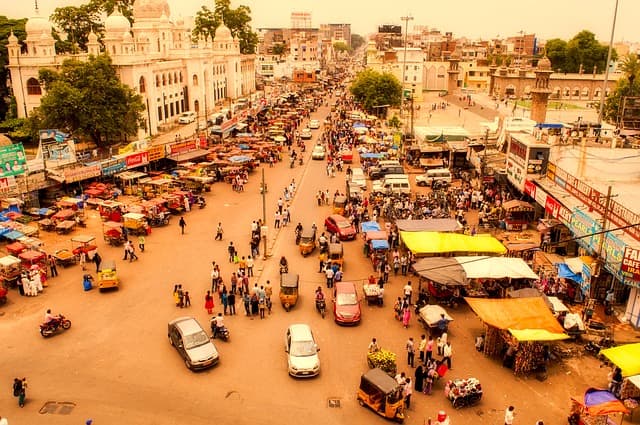
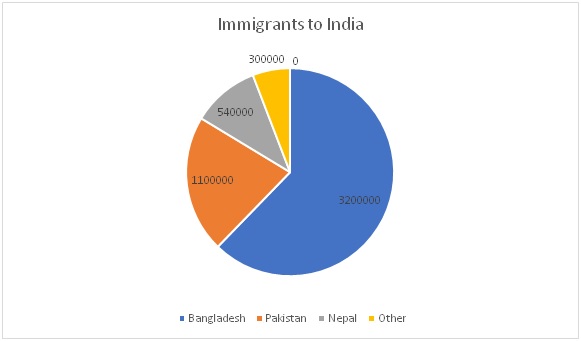
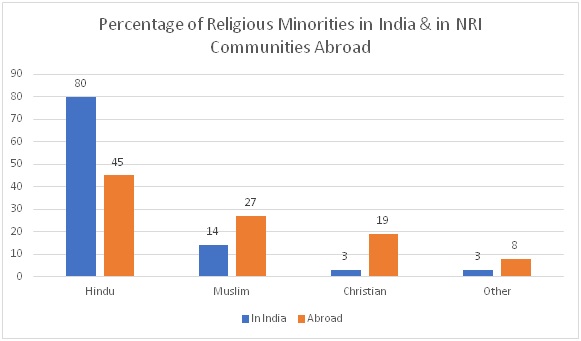
![Spain and Italy by w:enPiccolo Modificatore Laborioso (talk | contribs) [CC BY-SA 3.0 (http://creativecommons.org/licenses/by-sa/3.0/)]](https://www.immigroup.com/images/news/Italy_Spain_Locator.jpg)
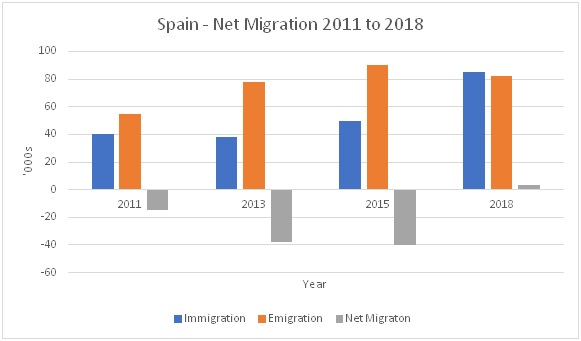
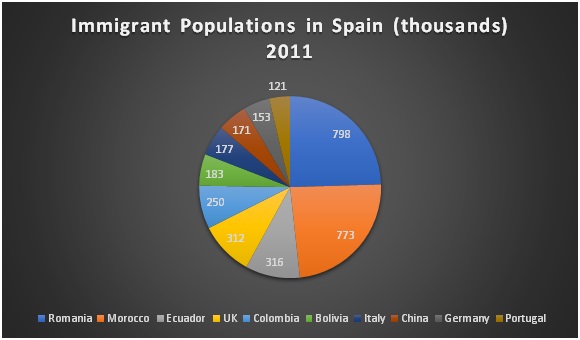
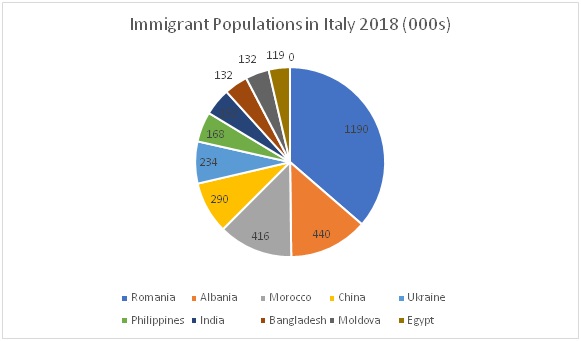
![12 Apostles by Michael J Fromholtz [CC BY-SA 4.0 (https://creativecommons.org/licenses/by-sa/4.0)]](https://www.immigroup.com/images/news/The_Twelve_Apostles_2011.jpg)
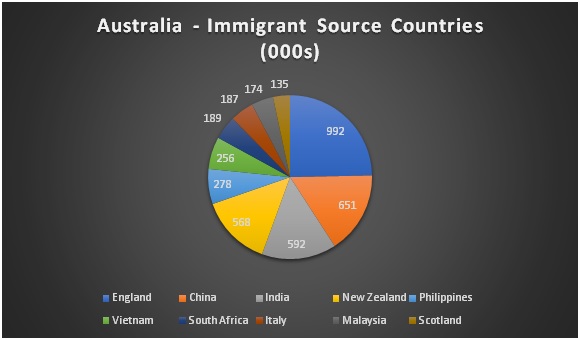
![Canada and France by Aquintero82 [CC BY-SA 4.0 (https://creativecommons.org/licenses/by-sa/4.0)]](https://www.immigroup.com/images/news/640px-Canada_France_Locator.jpg)
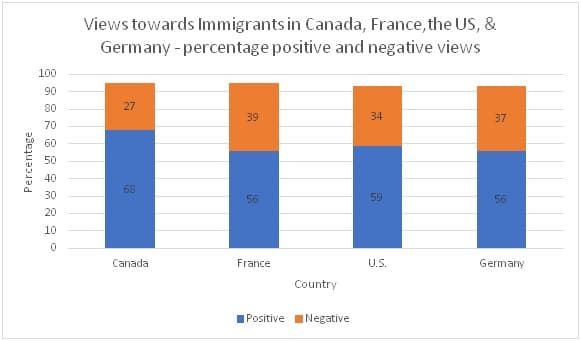
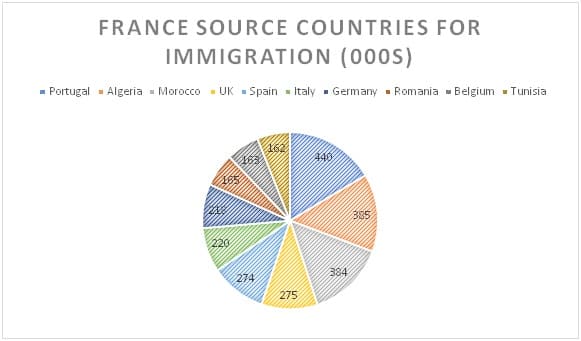
![Dubai by Xiaotong Gao [CC BY-SA 3.0 (https://creativecommons.org/licenses/by-sa/3.0)]](https://www.immigroup.com/images/news/Downtown_Dubai_-_Dubai_-_United_Arab_Emirates_-_panoramio_(22).jpg)
